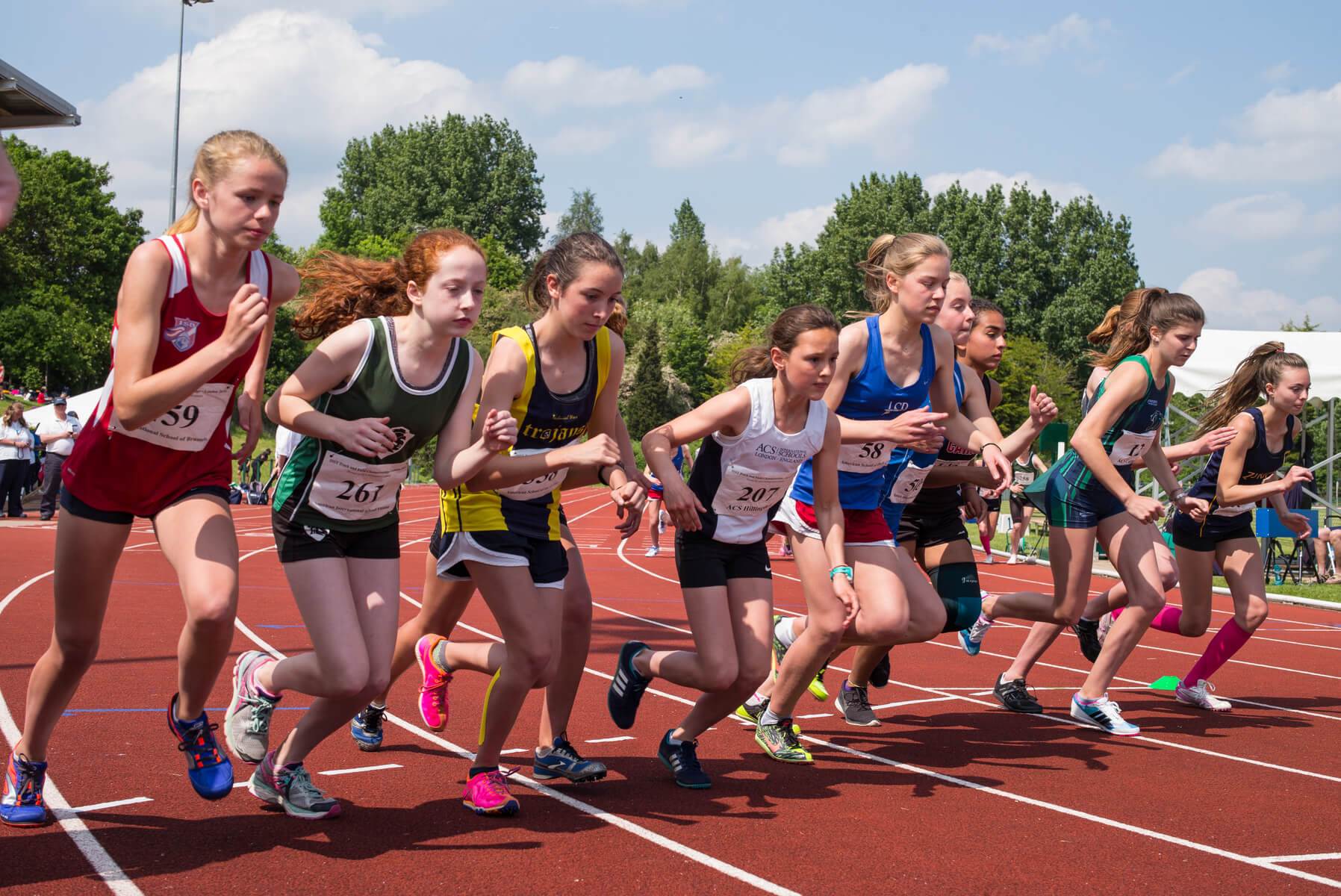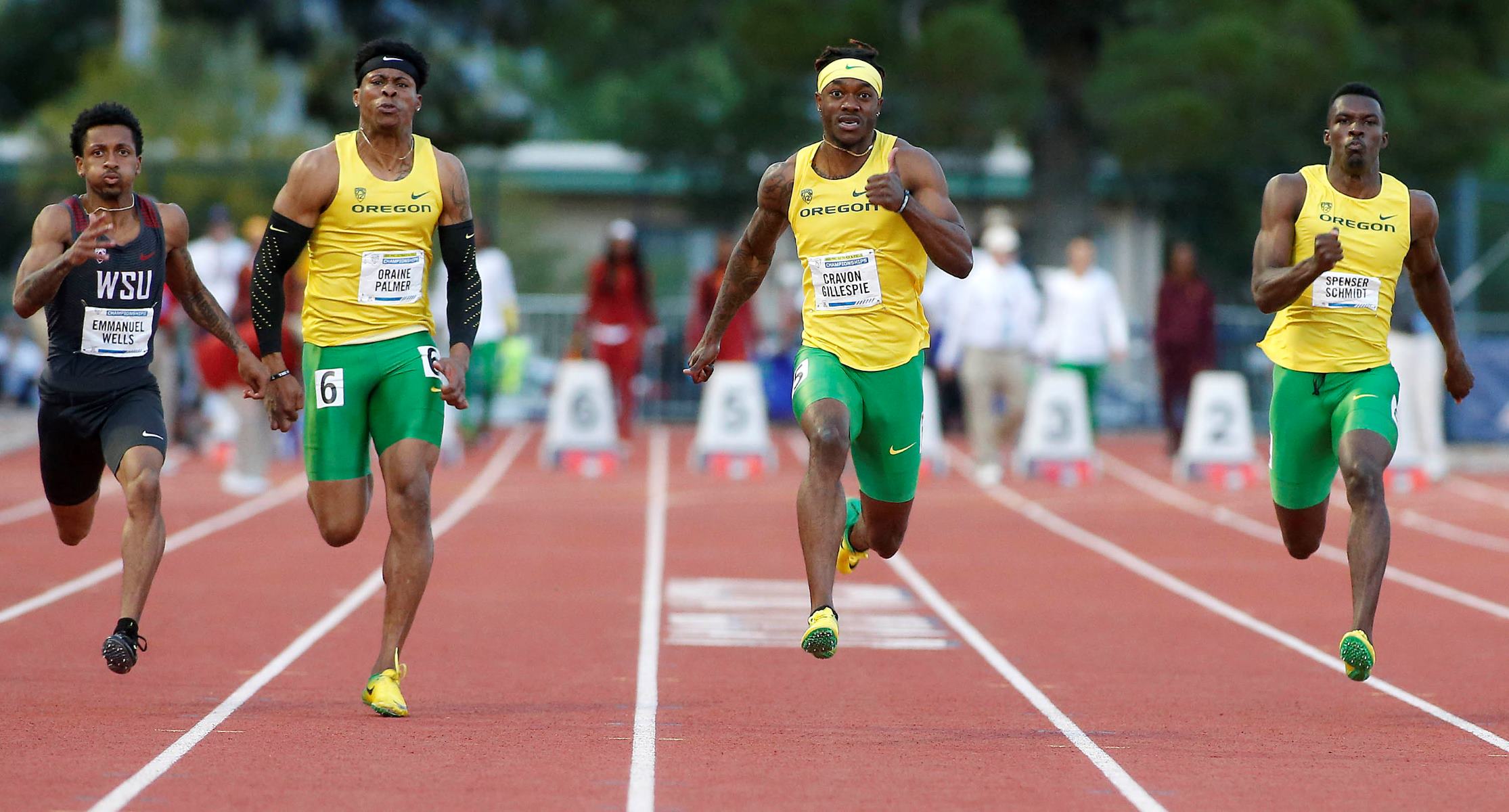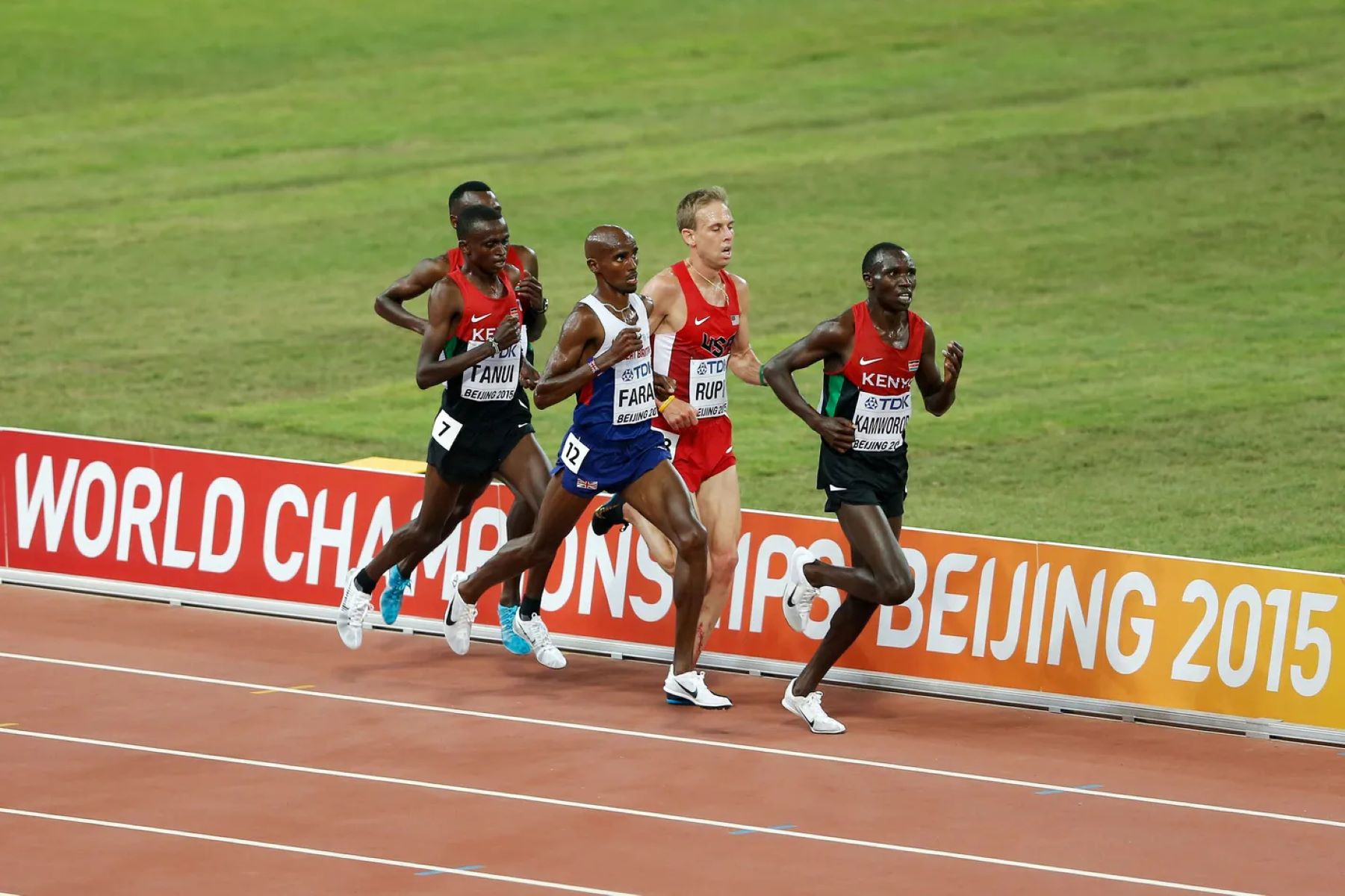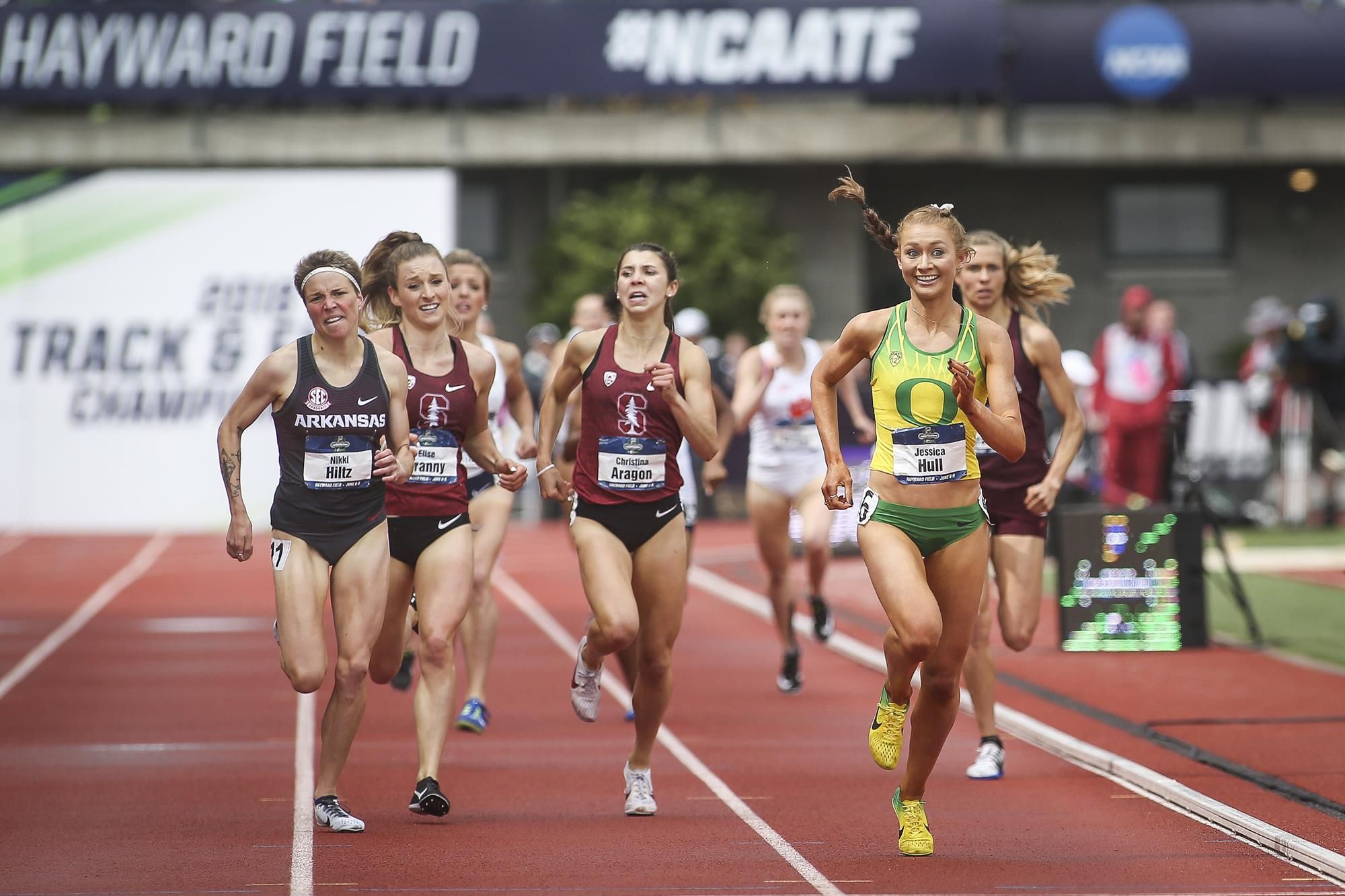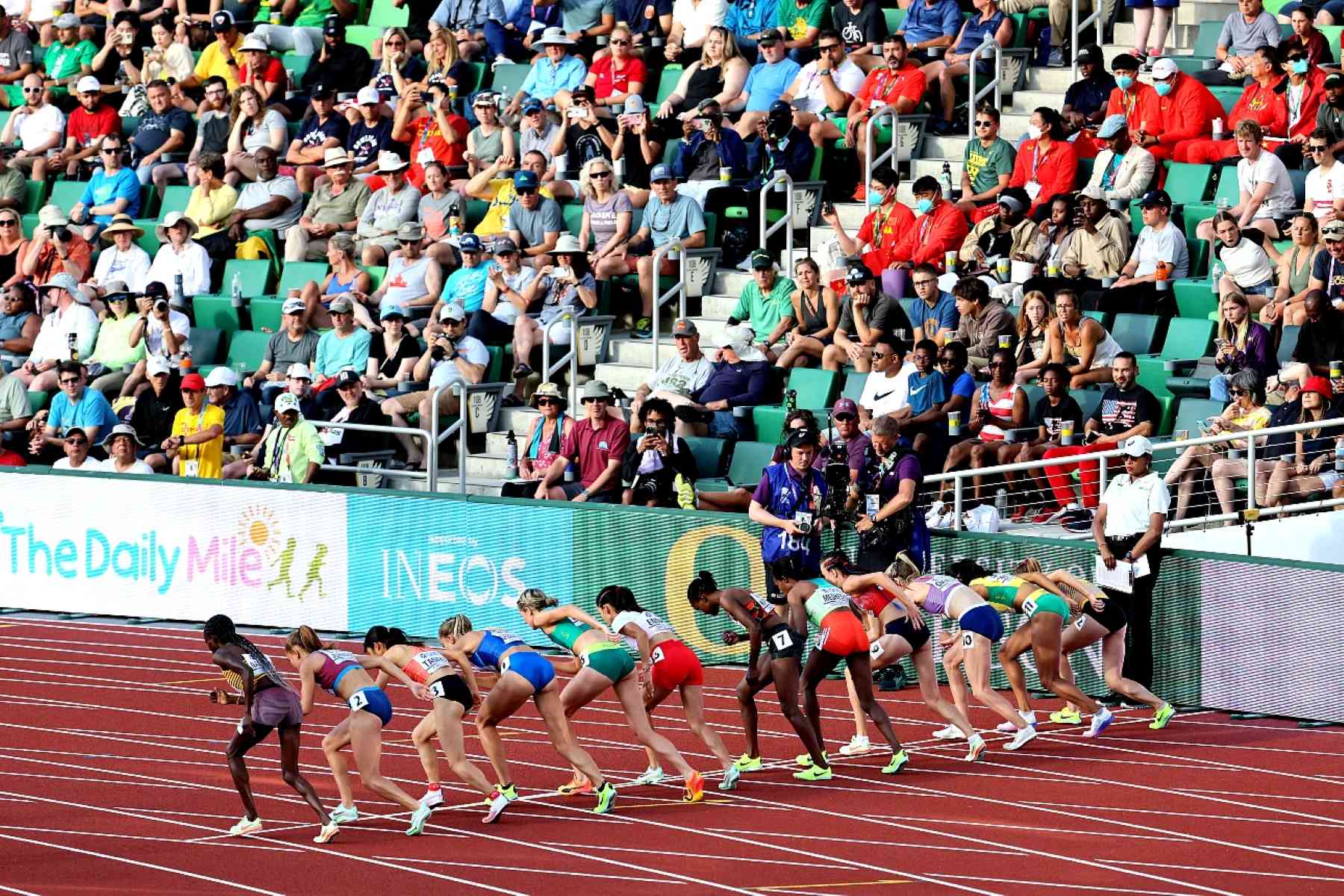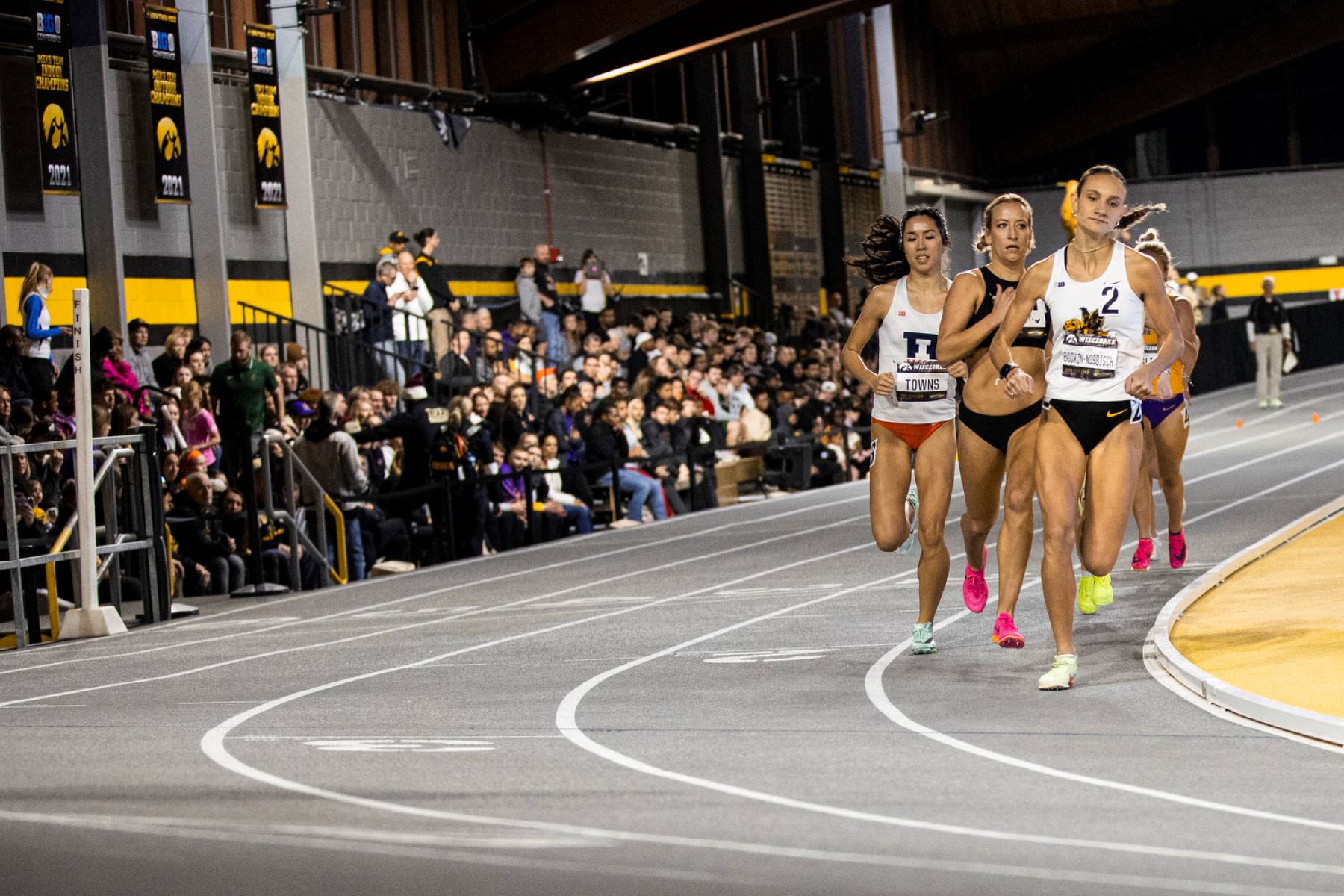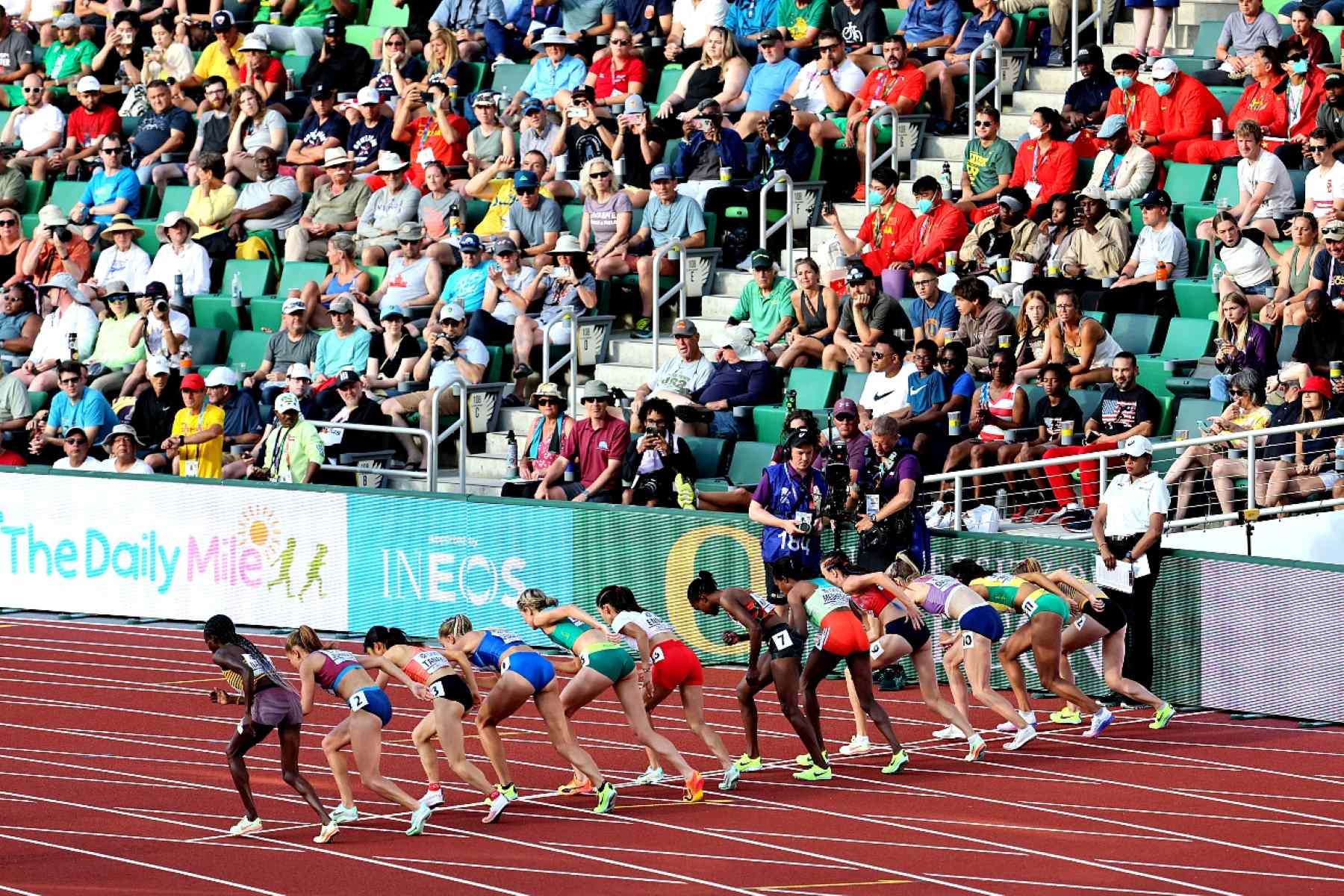Home>Misc>Featured>How Many Field Events Are There In Track And Field?
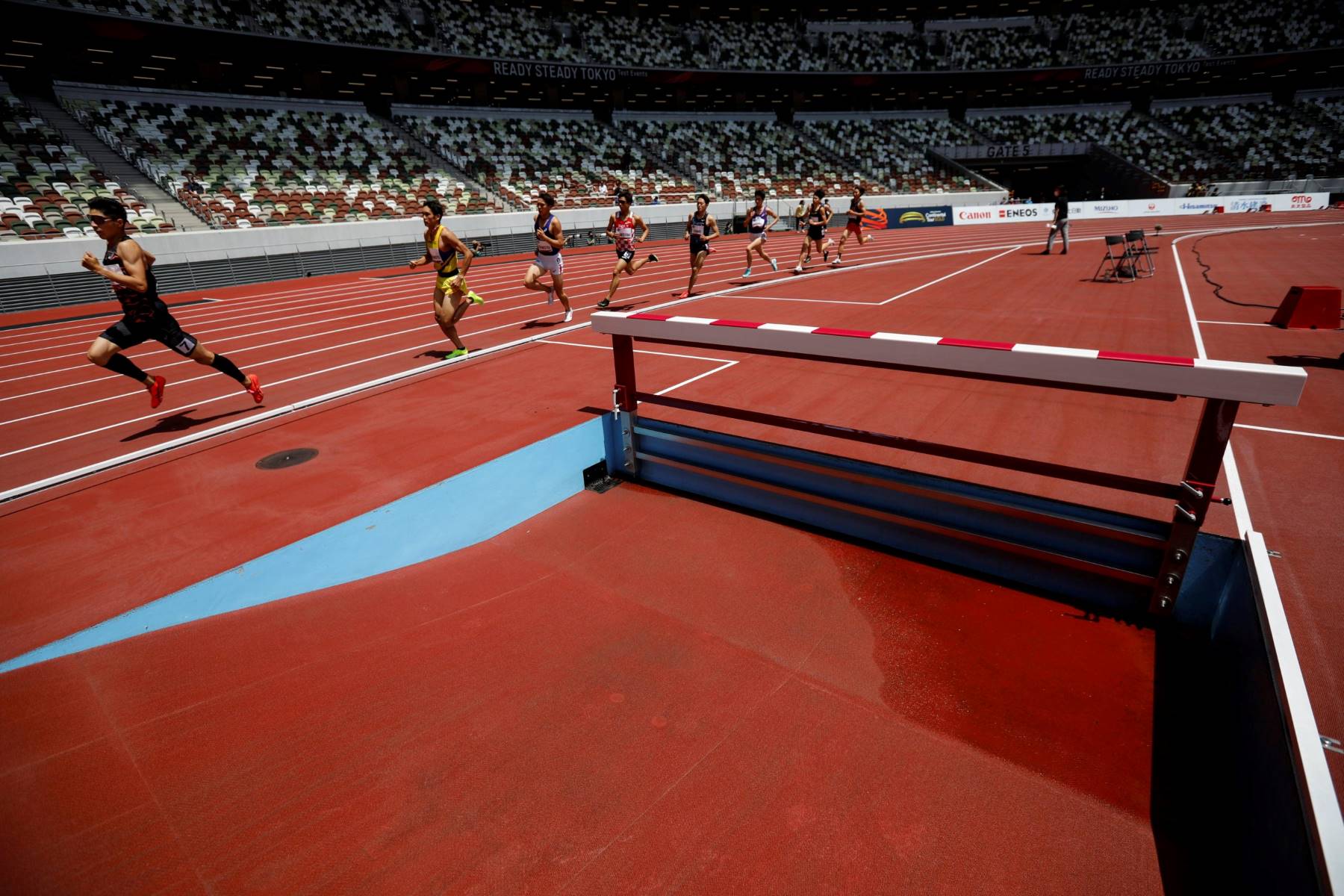

Featured
How Many Field Events Are There In Track And Field?
Modified: January 1, 2024
Featured: Discover the various field events in track and field, including high jump, long jump, shot put, discus throw, and more! Find out how many different events there are and get ready for an exciting athletic experience.
Introduction
Track and field is a popular athletic sport that consists of various running, jumping, and throwing events. It is a sport that tests not only speed, agility, and strength but also endurance and coordination. With a rich history dating back to ancient civilizations, track and field has evolved into a highly competitive and exciting sport that showcases the remarkable abilities of athletes from around the world.
The sport is divided into two main categories: running events and field events. Running events involve sprinting, middle-distance, long-distance, hurdles, and relay races, while field events focus on jumping and throwing disciplines. Each event requires different skills and techniques, adding diversity and excitement to track and field competitions. In this article, we will explore in detail the different types of field events that make track and field such a thrilling and dynamic sport.
The field events in track and field can be further categorized into jumping events and throwing events. Jumping events include the high jump, long jump, triple jump, and pole vault, while throwing events consist of the shot put, discus throw, javelin throw, and hammer throw. Let’s dive deeper into each of these events to understand their unique characteristics and what it takes to excel in them.
Running Events
Running events are a fundamental component of track and field, incorporating a range of distances and obstacles. These events demonstrate the speed, endurance, and tactical prowess of athletes. Whether it’s a short sprint or a long-distance race, each event presents its own set of challenges and requires a specific skill set.
Sprinting: Sprinting events are the shortest and fastest races in track and field. The most common sprint distances are 100 meters, 200 meters, and 400 meters. Sprinters showcase explosive speed and quick acceleration. It’s a thrilling sight to witness athletes darting down the track, pushing their bodies to the limit in a bid to cross the finish line first.
Middle distance: Middle-distance races usually range from 800 meters to 1500 meters. These events require a combination of speed and endurance. Athletes need to maintain a fast pace throughout the race while strategically conserving energy for a strong kick at the end.
Long distance: Long-distance races include events like the 3000 meters, 5000 meters, and 10000 meters. These races demand exceptional endurance as athletes must sustain a steady pace over multiple laps. Patience, mental fortitude, and an ability to pace oneself are crucial for success in these events.
Hurdles: Hurdle races involve sprinting over a set of hurdles placed at regular intervals along the track. The height and spacing of the hurdles vary depending on the race distance. Athletes must possess great speed, agility, and precision to navigate the hurdles without slowing down. Hurdles races add an extra layer of excitement and technical proficiency to the running events.
Relay races: In relay races, teams of four runners compete together, each running a designated distance before passing a baton to the next runner. The most common relay events are the 4×100 meters and 4×400 meters. Relay races require not only individual speed but also seamless teamwork, precise baton exchanges, and efficient lane management. The camaraderie and excitement of relay events make them a fan favorite in track and field.
Sprinting
Sprinting is one of the most exhilarating events in track and field, showcasing raw speed and explosive power. It is a test of athleticism, technique, and mental fortitude. Sprinters are known for their ability to cover short distances in the shortest possible time, displaying remarkable acceleration and maintaining high speeds throughout the race.
The most common sprint distances in track and field are the 100 meters, 200 meters, and 400 meters. Each of these races requires different strategies and strengths.
100 meters: The 100-meter sprint is often referred to as the “blue ribbon” event of track and field. It is a pure test of speed, demanding explosive acceleration right from the start. In a matter of seconds, athletes strive to cross the finish line while reaching top speeds. The race is over in a flash, but the margin for error is minimal, making it a thrilling spectacle for spectators.
200 meters: The 200-meter sprint builds upon the speed and endurance of the 100 meters. Athletes must negotiate the curve of the track, maintaining their speed and form while conserving energy for the final stretch. The 200 meters requires a balance of power and control, with athletes strategically managing their energy output to finish strong.
400 meters: The 400-meter sprint is a grueling race that combines speed and endurance. Athletes must possess the ability to maintain a fast pace while managing their energy throughout the entire lap of the track. The 400 meters requires a fine balance between sprinting and pacing oneself to avoid burnout. It is often described as one of the most mentally challenging events in track and field.
Success in sprinting is not solely determined by physical abilities. Technique plays a crucial role in maximizing speed and efficiency. Sprinters must focus on proper posture, stride length, arm movements, and the explosive power generated from the starting blocks. Training also includes developing fast twitch muscle fibers, improving reaction time, and mastering the art of drive phase acceleration.
Furthermore, mental strength and focus are vital in sprinting. Maintaining composure under pressure, visualizing success, and channeling adrenaline effectively are essential for sprinters to achieve peak performance. The intense competition and pressure to perform at the highest level make sprinting one of the most captivating events in track and field.
Middle Distance
Middle distance races in track and field include distances ranging from 800 meters to 1500 meters. These events require a combination of speed, endurance, and tactical strategy, making them both physically and mentally demanding. Middle distance runners need to maintain a fast pace while conserving energy for a strong kick at the finish.
800 meters: The 800-meter race is a test of both speed and endurance. It is often referred to as the most challenging sprinter’s race or the shortest endurance event. Runners need to find the right balance between a fast start and maintaining a steady pace throughout the race. The beginning requires explosive speed, while the later part demands the ability to sustain speed and endure the physical strain.
1500 meters: The 1500-meter race is a true display of endurance. Athletes need to maintain a consistent pace throughout the race while strategically positioning themselves to make a decisive move in the final lap. The race requires a combination of aerobic capacity, speed, and tactical awareness. Runners must possess the ability to judge their energy levels and make strategic decisions on when to surge or conserve energy.
In middle-distance events, technique plays a vital role in maximizing speed and efficiency. Runners focus on maintaining proper posture, stride length, and arm movements to optimize their energy output. They also work on their ability to change gears and adjust their speed throughout the race, adapting to the flow of the competition.
Middle-distance races are not only about physical stamina and technique but also mental strength. Athletes must navigate through the challenges of fatigue, maintaining mental focus, and pushing themselves to the limit. The strategic aspect of these races adds an extra level of complexity, requiring runners to make split-second decisions and adapt to the movements of their competitors.
Training for middle distance events involves a combination of aerobic and anaerobic conditioning, focusing on both endurance and speed. Runners incorporate long-distance runs, interval workouts, tempo runs, and speed training to enhance their overall performance. They also practice race simulations to develop race strategies and familiarize themselves with different scenarios they may encounter on the track.
Success in middle distance events often comes down to the ability to execute a well-planned race strategy, judge pacing accurately, and unleash a powerful finishing kick. The combination of physical prowess and mental fortitude required makes middle-distance races thrilling to watch and highly rewarding for both athletes and spectators.
Long Distance
Long-distance races in track and field are a true test of endurance, mental strength, and strategic skill. These events typically include distances such as the 3000 meters, 5000 meters, and 10000 meters. Long-distance runners must possess exceptional stamina and the ability to maintain a steady pace over multiple laps.
3000 meters: The 3000-meter race requires a balance between speed and endurance. Runners need to strike a fine balance between conserving energy and maintaining a consistently fast pace. This event demands mental discipline and a solid understanding of race tactics, as positioning and timing become crucial factors in securing a good finish.
5000 meters: The 5000-meter race is a true test of endurance as it covers a longer distance. Runners need to find a pace that they can maintain comfortably without sacrificing speed. Consistency is key, as maintaining an even pace throughout the race is essential to avoid excessive fatigue. A well-executed finishing strategy is crucial in this event since the final laps can significantly impact the final outcome.
10000 meters: The 10000-meter race is the ultimate test of endurance in track and field. It demands athletes to maintain a fast but sustainable pace for multiple laps. Mental toughness is vital as runners must conquer physical discomfort and push through the hurdles of fatigue. Strategic race management is crucial, including judging pace, positioning in the pack, and executing a strong finishing kick.
In long-distance events, efficiency and economy of effort are key factors. Runners focus on maintaining proper form, stride length, and rhythm to maximize their energy conservation. They learn to establish a consistent pace and avoid unnecessary surges or deceleration that can negatively impact their performance over such extended distances.
Training for long-distance events involves a combination of aerobic conditioning, strength training, and endurance workouts. Runners incorporate long runs, tempo runs, interval training, and hill repeats to build their aerobic capacity and improve their ability to maintain a steady pace over long distances. Mental training is also crucial to develop mental resilience and overcome the inevitable challenges faced during a long-distance race.
Long-distance races are not only a physical battle, but also a mental one. Athletes must find ways to stay motivated, maintain focus, and push through mental barriers. The ability to handle discomfort, develop mental toughness, and stay mentally engaged throughout the race is essential for success.
Watching long-distance races can be incredibly captivating as the drama often unfolds in the later stages of the race. The strategic moves, surges, and final sprints make for thrilling finishes, showcasing the incredible stamina and determination of the long-distance runners.
Hurdles
Hurdles is an electrifying event in track and field that combines sheer speed, agility, and technical precision. In hurdles races, athletes sprint over a set of obstacles known as hurdles, placed at regular intervals along the track. This event requires athletes to not only possess exceptional sprinting speed but also the ability to clear the hurdles without losing momentum.
The height and spacing of the hurdles vary depending on the race distance. The standard heights for men’s events are 42 inches (106.7 cm) for the 110-meter hurdles and 39 inches (99.1 cm) for the 400-meter hurdles. Women’s events use lower hurdles, with heights of 33 inches (83.8 cm) for the 100-meter hurdles and 30 inches (76.2 cm) for the 400-meter hurdles.
Hurdles races demand a unique combination of speed, power, flexibility, and coordination. Athletes must possess explosive acceleration from the starting blocks and maintain a high sprinting speed throughout the race, all while clearing the hurdles efficiently and without breaking their stride.
Proper technique is crucial in hurdles events. The lead leg must be lifted high to clear the hurdle, and the trail leg must follow quickly behind, driving forcefully to propel the athlete forward. Maintaining balance, rhythm, and a consistent stride pattern is essential to navigate the hurdles smoothly and maximize speed.
In addition to speed and technique, mental focus is paramount in hurdles races. Athletes must anticipate each hurdle, time their steps and jumps accurately, and maintain their composure under pressure. The ability to stay focused and execute precise movements is critical to avoid hitting hurdles or losing valuable time.
Hurdles races are exhilarating to watch as athletes display remarkable athleticism and agility. The drama often lies in the closely contested races, where athletes race neck-and-neck, adrenaline pumping, as they compete to be the first one to cross the finish line. The spectacle of leaping over hurdles at high speeds adds an extra layer of excitement and entertainment to the event.
Training for hurdles events involves a combination of sprint training, plyometric exercises, and technical drills. Athletes work on improving their speed and power through interval training and explosive workouts. They also focus on developing flexibility and strength in their legs to execute efficient hurdling techniques. Specific drills, such as practicing hurdle clearance and stride pattern variations, help athletes fine-tune their technique.
Overall, hurdles events require a unique blend of athleticism, technique, and mental fortitude. It is a thrilling event that tests the limits of human speed and agility and adds an element of excitement to track and field competitions.
Relay Races
Relay races are an exhilarating and highly anticipated event in track and field. They involve a team of four athletes working together to complete a designated distance, with each member running a specified portion of the race before passing a baton to the next runner. Relay races require a perfect mix of individual speed, seamless teamwork, and precise baton exchanges.
There are two main relay races in track and field: the 4×100 meters and the 4×400 meters. The 4×100-meter relay is a fast-paced event that demands explosive speed and precise baton exchanges. It requires athletes to sprint at high speeds, execute lightning-fast baton transfers, and maintain their momentum throughout the race. The 4×400-meter relay, on the other hand, is a longer and more strategic event. It requires runners to balance their speed and endurance while effectively timing baton exchanges.
Relay races are not only about individual speed but also about coordination and teamwork. Each team member has a specific role to play and contributes to the overall success of the team. The first runner needs explosive speed and a strong start to set the team in a good position. The middle runners maintain the team’s momentum and strategically position themselves for the final stretch. The anchor leg, usually the fastest runner, brings the team home with a powerful finish.
Precise baton exchanges are crucial in relay races. The exchanges must be executed within a designated zone, requiring excellent timing, coordination, and communication between the outgoing and incoming runners. A successful baton exchange can provide a valuable advantage, while a mishandled exchange can cost the team precious time and possibly lead to disqualification.
Training for relay races involves a combination of individual speed development and team coordination. Athletes focus on enhancing their sprinting abilities through speed and power workouts. They also practice baton exchanges repeatedly, working on their timing and developing a seamless transition between runners. Team chemistry and communication are fostered through shared training sessions, team-building activities, and ample practice to build trust and synchronization among the relay team members.
Relay races are a favorite among athletes and spectators because they showcase not only individual talent but also the spirit of camaraderie and teamwork. The high stakes and fast-paced nature of relay events create an atmosphere of excitement and anticipation, making them a highlight of any track and field competition.
Field Events
In track and field, the field events add an exciting dimension to the sport. These events focus on the jumping and throwing disciplines, allowing athletes to showcase their power, precision, and technique. Field events require a unique set of skills and offer a thrilling spectacle for both the athletes and spectators.
Field events can be further categorized into jumping events and throwing events. Let’s explore each category in detail to understand the diverse range of skills and challenges involved.
Jumping Events: Jumping events in track and field include the high jump, long jump, triple jump, and pole vault. These events showcase an athlete’s ability to generate explosive power, coordinate precise take-offs, and execute technically sound jumping techniques.
High Jump: The high jump is a test of vertical leap and flexibility. Athletes approach a bar and clear it by arching their bodies and lifting their legs. The goal is to clear the bar at the highest possible height without knocking it off the standards. Successful high jumpers display a combination of speed, power, and grace as they soar over the bar.
Long Jump: The long jump is all about generating horizontal momentum and executing a well-timed take-off. Athletes sprint down a runway and, upon reaching a designated point, propel themselves forward into a pit of sand. The goal is to achieve the longest distance from the take-off point to the nearest imprint in the sand. Long jumpers combine speed, power, and technique to maximize their distance.
Triple Jump: The triple jump is a combination of speed, power, and precise technique. Athletes execute a hop, a step, and a jump in rapid succession, covering a significant distance. The take-off and landing phases require excellent coordination and timing. Triple jumpers must generate explosive power and execute precise footwork to optimize each phase of the jump and achieve maximum distance.
Pole Vault: Pole vaulting is a dramatic and technically challenging event. Athletes use a flexible pole to launch themselves over a bar set at increasing heights. The aim is to clear the bar and land safely on a mat. Pole vaulters must combine speed, strength, agility, and accurate technique to execute successful vaults. The event requires tremendous physical and mental preparation to conquer the heights.
Throwing Events: Throwing events in track and field consist of the shot put, discus throw, javelin throw, and hammer throw. These events require strength, explosive power, and precise throwing techniques.
Shot Put: Shot put involves throwing a heavy metal ball (called a shot) as far as possible. Athletes must generate power from their lower body and transfer it to the shot through coordinated movements. The goal is to achieve maximum distance while maintaining balance and control.
Discus Throw: In the discus throw, athletes spin to generate momentum before releasing a flat, circular disc. Success in this event relies on a combination of rotational speed, technique, and strength. Athletes must generate enough centrifugal force to propel the discus as far as possible.
Javelin Throw: The javelin throw involves a running approach to generate speed and an explosive throw of a long spear-like device (the javelin). Athletes aim to maximize distance by combining an efficient throwing technique with strength and power generated through the run-up.
Hammer Throw: The hammer throw is a unique event that requires balance, coordination, and tremendous upper body strength. Athletes spin in a circle while releasing a heavy metal ball (the hammer) attached to a wire. The goal is to achieve maximum distance by generating speed and projectile motion.
Field events in track and field provide an incredible display of athleticism, strength, and technical proficiency. Whether it’s the explosive power in the jumps or the precision in the throws, these events captivate audiences and add an extra layer of excitement to the sport.
Jumping Events
The jumping events in track and field are a thrilling showcase of an athlete’s ability to generate explosive power, coordination, and technical precision. These events require a combination of speed, strength, and agility, allowing athletes to demonstrate their remarkable vertical and horizontal leaping abilities. Let’s explore the various jumping events in detail.
High Jump: The high jump is an event that tests an athlete’s ability to clear a horizontal bar set at increasing heights. Athletes use a variety of techniques, including the Fosbury Flop and the Scissors Jump, to lift their bodies over the bar. The high jump requires not only raw athleticism but also careful timing, flexibility, and body control. Successful high jumpers exhibit a graceful and coordinated approach, executing explosive take-offs and fluid clearance techniques.
Long Jump: The long jump is all about generating horizontal momentum and achieving maximum distance from the take-off point to the nearest imprint in the sandpit. Athletes sprint down a runway, building speed and power, before launching themselves into the air. During the flight phase, they position their bodies to gain optimal distance while ensuring a safe landing. The long jump demands a combination of explosive acceleration, precise take-off techniques, and impeccable body positioning to achieve the farthest jump possible.
Triple Jump: The triple jump combines speed, power, and technique to cover significant distances. Athletes execute three consecutive movements: a hop, a step, and a jump. The hop is a powerful take-off, followed by a mid-air step and a final landing phase. Each phase demands precise timing, balance, and coordination. Triple jumpers generate momentum through the penultimate step and then launch themselves into the final jump. Success in the triple jump lies in maintaining speed and executing technically sound movements to maximize overall distance.
Pole Vault: Pole vaulting is a thrilling event that requires athletes to use a flexible pole to propel themselves over a bar set at increasing heights. Athletes sprint down a runway and plant the pole into a box, using it as leverage to catapult themselves over the bar. The key to success in pole vault lies in mastering the complex interactions between speed, technique, and the vaulting pole. Athletes must generate enough momentum, transfer their energy into the pole, and execute precise movements to achieve heights that defy gravity.
Jumping events in track and field demand meticulous training and technique development. Athletes work on their speed through sprint training, enhance their strength and explosive power through weightlifting, and refine their jumping techniques through drills and practice. These events also require a deep understanding of body mechanics, spatial awareness, and the ability to adapt techniques according to individual strengths and preferences.
Watching the jumping events is truly captivating as athletes defy gravity and display their incredible athleticism. The strategic approach, explosive movements, and graceful execution of these events make them a highlight of any track and field competition.
High Jump
The high jump is a captivating and technically demanding event in track and field that showcases an athlete’s ability to clear a horizontal bar set at increasing heights. It is a true test of vertical leap, flexibility, and precise execution. Competitors must combine explosive power, speed, and body control as they lift their bodies over the bar.
One of the most iconic aspects of high jump is the unique techniques employed by athletes to clear the bar successfully. There are several approaches used, including the Fosbury Flop, the Western Roll, and the Straddle Technique. The most widely used technique in modern high jump is the Fosbury Flop, where the athlete approaches the bar headfirst and arches their body to clear the bar. This technique revolutionized the event when introduced by Dick Fosbury in the 1960s, allowing athletes to achieve higher jumps and avoid injury.
To excel in the high jump, athletes must develop explosive power and speed during the approach. The run-up is crucial, as it determines the amount of momentum an athlete can generate. Athletes carefully time their take-off to convert their horizontal speed into vertical lift. The take-off foot must be placed precisely, followed by a quick and forceful extension of the body and legs to clear the bar. The coordinated movement of the arms and the arching of the back facilitate the clearance.
Flexibility is another crucial component of high jump success. Athletes must be able to contort their bodies in mid-air to clear the bar. This requires exceptional joint mobility and body awareness. Athletes often undergo rigorous stretching routines to improve their flexibility, which allows them to maneuver their bodies over the bar with minimal contact and clearance.
Training for the high jump involves a combination of strength and plyometric exercises, sprint training, and technique refinement. Athletes focus on developing explosive power through weightlifting and plyometrics, which helps them generate the necessary speed and power during the approach. They also work on honing their jumping technique, focusing on proper body positioning, take-off mechanics, and bar clearance.
The high jump is a dynamic and suspenseful event to watch, with athletes progressively increasing the height of the bar until only the best remain. Each jump becomes a thrilling challenge as the athletes push their physical and mental limits. The heights reached in high jump competitions are truly awe-inspiring, as athletes defy gravity and compete to set new records.
Success in the high jump requires a combination of physical attributes, technical mastery, and mental fortitude. Athletes must possess explosive power, exceptional body control, and the ability to handle the pressure of competition. The high jump is not only a display of athletic prowess but also a testament to the dedication, determination, and skill of the athletes who participate.
Long Jump
The long jump is an exhilarating event in track and field that challenges athletes to generate momentum and leap as far as possible from a take-off point to the nearest imprint in the sandpit. It is a display of explosive power, speed, and precise technique as athletes strive to achieve the greatest horizontal distance in a single bound.
Long jumpers begin by sprinting down a runway with the goal of building maximum speed and generating optimal take-off power. The approach is critical, as it determines the amount of momentum an athlete can transfer into the jump. Athletes carefully time their take-off, raising their lead leg while simultaneously swinging their arms forward to maximize their horizontal velocity.
Once in the air, long jumpers must execute precise body positioning to achieve the longest possible jump. They extend their legs in front of them to gain additional distance and shift their bodies into a horizontal position for optimal aerodynamics. The technique varies among athletes, with some favoring a hang technique, where they hold their legs in a folded position, and others employing a hitch-kick technique, where they execute a scissor-like motion with their legs.
The landing is a critical aspect of the long jump. Athletes aim to maintain balance and control upon landing, as any instability or contact with the sand beyond the legal landing area can result in a foul. Successful long jumpers must possess body control, spatial awareness, and the ability to absorb impact effectively.
Training for the long jump involves a combination of sprint exercises, strength training, plyometrics, and technique refinement. Athletes work on developing explosive power through weightlifting and plyometric exercises to improve their speed and take-off capabilities. Plyometrics, such as bounding and box jumps, aid in enhancing the athlete’s ability to produce rapid and powerful movements necessary for a successful jump. Technical drills, such as practicing take-offs and body positioning, are also essential to refine technique and maximize distance.
Watching a long jump competition is a thrilling experience, with athletes launching themselves through the air in pursuit of greater distances. The suspense builds with each attempt as athletes try to outdo their previous jumps or surpass their competitors. The long jump embodies the spirit of track and field, combining athleticism, technique, and the pursuit of excellence.
Success in the long jump requires a combination of explosive power, sprinting speed, precise techniques, and mental focus. Athletes need to generate maximum horizontal velocity during the approach, execute optimal take-offs, maintain proper body positioning in the air, and land with balance and control. The long jump is a true testament to an athlete’s athleticism and ability to harness their power and technique to achieve remarkable distances.
Triple Jump
The triple jump is a captivating event in track and field that combines speed, power, and technique in a series of consecutive movements. It challenges athletes to showcase their ability to generate momentum and cover significant distances through a hop, step, and jump sequence. The triple jump requires precise coordination, explosive power, and impeccable timing.
The triple jump begins with the hop phase, where the athlete takes off from one foot and lands on the same foot. The hop serves to generate vertical lift and redirect the body’s momentum forward. Athletes must execute a powerful push-off and maximize their hang time in the air to set up the subsequent steps.
After the hop, the athlete executes the step phase, transitioning from the take-off foot to the opposite foot. This step enables the athlete to continue forward momentum while preparing for the final phase of the jump. It requires quick footwork and precise positioning to set up an optimal take-off angle for the jump phase.
The jump phase is the final part of the triple jump, showcasing an athlete’s explosiveness and ability to cover significant horizontal distance. Athletes launch themselves into the air, transferring their forward momentum into a long jump. It demands exceptional synchronization, technique, and body control. The jump phase entails extending the legs forward in a swift motion and positioning the body for maximum distance.
Success in the triple jump relies on several key factors. Athletes must achieve a balance between maintaining speed and generating enough power to execute explosive take-offs in each phase. Timing is crucial, as the athlete needs to coordinate the precise transitions between the hop, step, and jump phases. The ability to generate a powerful drive during each take-off, coupled with excellent spatial awareness, allows athletes to channel their momentum and cover significant distances.
Training for the triple jump involves a combination of speed and power development, plyometrics, and technical refinement. Athletes focus on building explosive power through weightlifting and plyometric exercises to enhance the take-off in each phase. Plyometric drills, such as bounds and box jumps, help improve the athlete’s ability to produce rapid and powerful movements. Technical drills, such as practicing phase transitions and improving body positioning, are essential to execute a seamless and technically sound triple jump.
Watching the triple jump is a delight for track and field enthusiasts, witnessing athletes effortlessly string together the hop, step, and jump phases to cover remarkable distances. The combination of power, technique, and grace displayed by triple jumpers is truly captivating, making this event a highlight of any competition.
Success in the triple jump requires a unique blend of explosive power, speed, coordination, and precise technique. Athletes must master each phase of the jump, execute precise transitions, and possess the mental fortitude to channel their energy and momentum effectively. The triple jump exemplifies the beauty and complexity of track and field events, highlighting the phenomenal athleticism and skill of the athletes who participate.
Pole Vault
Pole vaulting is one of the most captivating and technically challenging events in track and field. It showcases an athlete’s ability to use a flexible pole to propel themselves over a bar set at increasing heights. The pole vault requires a unique combination of speed, strength, agility, and precise technique.
The event begins with the athlete sprinting down the runway, building maximum speed and generating momentum. The pole vaulter then plants the pole into a designated box and uses it as leverage to launch themselves into the air. As the athlete leaves the ground, they must use their upper body strength to begin an upward swing on the pole, bending it under their weight.
As the pole bends, the vaulter uses their explosive power to convert their horizontal speed into upward momentum. The athlete then times their release from the pole, using their energy to propel themselves over the bar. Once in the air, the vaulter must execute a precise rotation, known as the clearance phase, to effectively maneuver their body and clear the bar.
Clearing the bar in pole vault requires not only physical aptitude but also exceptional body control and spatial awareness. Athletes must execute a coordinated movement pattern, using their arms, legs, and core to achieve maximum clearance height while simultaneously minimizing contact with the bar.
Training for pole vault involves a combination of strength training, sprint exercises, technical drills, and practice on different pole vault heights. Athletes focus on developing explosive power through weightlifting and plyometric exercises to enhance their speed during the approach. They also work on perfecting their pole grip, plant technique, and body positioning during take-off and clearance.
Pole vaulting is a thrilling event to watch, with athletes defying gravity as they soar over the bar. The combination of athleticism, power, technique, and fearless determination creates an aura of excitement during each attempt. The heights achieved by pole vaulters are often awe-inspiring and push the boundaries of what seems physically possible.
Success in pole vault requires a unique blend of physical capabilities and mental fortitude. Athletes must possess the strength and explosive power to generate speed during the approach and launch themselves off the pole. They also need the technical finesse to maintain control, position their body effectively, and maximize clearance height. Mental focus, fearlessness, and the ability to execute precise movements under pressure are also crucial in achieving greatness in pole vaulting.
Pole vaulting is a testament to the incredible athleticism, dedication, and technical mastery of the athletes who compete in the event. It showcases the ingenuity and boldness of those who push the limits of human potential, making it one of the most captivating events in track and field.
Throwing Events
Throwing events in track and field showcase the incredible strength, power, and precision of athletes as they launch objects through the air. These events require a unique combination of technique, explosive strength, and mental focus. The throwing events consist of the shot put, discus throw, javelin throw, and hammer throw, each with its own set of challenges and requirements.
Shot Put: The shot put involves throwing a heavy metal ball (known as the shot) for maximum distance. Athletes must generate power from their lower body and transfer it into the shot through a combination of rotational force and explosive arm movements. The shot put requires immense strength, explosiveness, and precise technique for optimal release and distance achieved.
Discus Throw: In the discus throw, athletes generate momentum through a spinning motion and release a flat, circular disc. The throwing technique involves the mastery of rotational forces, weight shifts, and proper discus release technique. Athletes must generate power, transfer their energy effectively from the ground through their body, and achieve a precise release angle for maximum distance.
Javelin Throw: The javelin throw requires athletes to generate speed through a running approach and propel a long spear-like implement (the javelin) as far as possible. Athletes must master the complex interaction between running speed, upper body coordination, and javelin release technique. The javelin throw demands a combination of explosive power, proper body positioning, and precise timing of the release for optimal distance.
Hammer Throw: The hammer throw is a unique event that involves athletes spinning in a circle while releasing a heavy metal ball (the hammer) attached to a wire. Athletes generate momentum by rotating rapidly, and then release the hammer to achieve maximum distance. The hammer throw requires exceptional strength, balance, coordination, and timing in order to generate and transfer power smoothly through the swinging motion of the hammer.
Success in the throwing events relies on a combination of physical attributes, technical mastery, and mental fortitude. Athletes must possess immense strength and explosive power to generate maximum force in their throws. They must also refine their technique to achieve optimal release angles, body positioning, and coordination for maximum distance.
Training for throwing events involves a combination of strength training, technique drills, and specific throwing practice. Athletes work on developing their strength through weightlifting and conditioning exercises to enhance their power. Technique drills focus on body positioning, balance, and coordination specific to each throwing event. Regular practice and competition allow athletes to refine their throwing techniques and gain experience in executing under pressure.
The throwing events are a captivating spectacle to watch, with athletes demonstrating immense power and precision. The combination of physical strength, technical expertise, and mental focus required in these events makes them a true testament to the exceptional athletic ability of the participants.
Shot Put
The shot put is a captivating throwing event in track and field that demands a combination of strength, explosive power, and technique. Athletes compete to propel a heavy metal ball, known as the shot, as far as possible. The shot put requires immense physical strength, precision, and mental focus to achieve maximum distance.
In the shot put, athletes generate power from the lower body by pushing off from the throwing circle and transferring their energy into the shot. The throwing technique involves a combination of rotational force, weight shift, and explosive arm movements. Athletes must generate tremendous force through their legs and core as they rotate their bodies, driving the shot forward with maximum velocity.
Proper technique is crucial in the shot put to optimize release angle and distance. Athletes hold the shot near their neck, with their hand guiding the shot, while their elbow remains high. During the throwing action, the athlete extends their arm and releases the shot at the precise moment for optimal distance. This timing and coordination require meticulous practice and muscle memory.
Strength training plays a vital role in shot put performance. Athletes focus on building explosive power through weightlifting exercises like squats, cleans, and overhead presses. They also incorporate plyometric exercises to enhance their lower body propulsion and improve the transfer of force during the throwing action.
Mental focus is essential in the shot put as athletes need to harness their strength and explosiveness while maintaining control and precision. They must block out distractions, visualize their throws, and execute their technique with confidence to achieve their best results.
Throwing the shot put requires a specialized throwing circle. The athlete must remain within the circle throughout the throw and hit the proper footing positions to maximize their performance. Mastery of the circle technique and precise footwork is essential for generating maximum force and maintaining balance during the throw.
Training for the shot put involves a combination of strength training, technique refinement, and specific throwing practice. Athletes work on developing their strength through weightlifting exercises that target the muscles used in the shot put. They also work closely with coaches to refine their technique, focusing on body positioning, arm action, and release angle. Regular practice and competition allow athletes to fine-tune their skills and gain valuable experience in aiming for the best possible shot put distance.
Watching the shot put is a thrilling experience, witnessing athletes generate incredible power and force, launching the shot into the air. The combination of strength, technique, and mental focus on display makes the shot put an intriguing event in track and field competitions.
Success in the shot put requires a unique blend of physical strength, explosive power, technique, and mental resilience. Athletes who excel in shot put have the ability to generate maximum force, execute precise techniques, and channel their physical prowess into the shot to deliver exceptional distances. This event highlights the dedication and athleticism of shot put athletes as they strive to achieve their best performances.
Discus Throw
The discus throw is a captivating event in track and field that requires athletes to generate momentum through a spinning motion and release a flat, circular discus as far as possible. The discus throw demands a combination of strength, speed, coordination, and precise technique.
At the beginning of the throw, the athlete spins within a throwing circle, building momentum through rapid rotations. This spinning technique enables athletes to generate angular velocity, transfer energy from the ground through their body, and maximize the force applied to the discus at release.
As the athlete completes the rotations, they release the discus with precise timing, taking advantage of the generated momentum and projecting it into the throw. The discus must be released with a specific technique that involves a flick of the wrist, driving force from the fingers, and proper angle and trajectory.
Success in the discus throw relies on several key factors. Athletes must possess exceptional strength and explosiveness to generate sufficient throwing power. The rapid rotations during the spin require fine balance, coordination, and body control to maintain stability and generate maximum force.
Technical mastery plays a crucial role in achieving greater distances in the discus throw. Athletes must correctly position their body, maintain proper balance, and execute precise release techniques. They also need to find the optimal release angle to ensure the discus achieves maximum efficiency, lift, and distance in flight.
Training for the discus throw includes a combination of strength training, technique drills, and specific throwing practice. Athletes focus on developing their strength through weightlifting exercises such as power cleans, squats, and overhead presses. They also incorporate exercises targeting rotational power and explosiveness to enhance the spinning motion and force generated during the throw.
Technical drills are essential in refining the discus throwing technique. Athletes work on body positioning, balance, and coordination specific to the discus throw. Practice sessions involve repetition of the spinning motion, release technique, and refinement of release angles to optimize distance and flight trajectory.
Watching the discus throw is a thrilling experience, with athletes showcasing immense power and control as they launch the discus into the air. The combination of strength, motion, precise technique, and mental focus contributes to the captivating nature of this event.
Success in the discus throw requires a unique combination of physical attributes, technical proficiency, and mental fortitude. Athletes must possess exceptional strength, explosiveness, and coordination while executing precise techniques and maintaining focus under pressure. The discus throw exemplifies the remarkable athleticism and dedication of those who compete in this challenging event.
Javelin Throw
The javelin throw is a mesmerizing event in track and field that combines skill, strength, and precision. Athletes compete to throw a long spear-like object called a javelin as far as possible. The javelin throw requires a combination of speed, technique, and coordination to maximize throwing distance.
At the start of the throw, the athlete sprints down the runway, achieving maximum speed before launching the javelin. The approach plays a crucial role in generating momentum and translating that speed into increased throwing force. Athletes must optimize their steps, build acceleration, and coordinately synchronize their run-up with the throwing motion.
As the athlete reaches the throwing position, they initiate the release by extending their arm forward and bringing the javelin over their shoulder. The transfer of energy from the run-up to the throwing arm is vital, and it requires synchronized timing, upper body strength, and efficient body mechanics.
The throwing technique in javelin includes a combination of phases, including the pull, the block, and the release. In the pull phase, the athlete creates the necessary leverage by pulling the javelin backward, loading tension in the throwing arm and the entire body. The block phase involves the quick transfer of force into the ground to generate rotational power. Finally, in the release phase, the athlete releases the javelin with precision, ensuring the right angle and trajectory for optimal distance and accuracy.
Training for the javelin throw incorporates a combination of strength training, technique refinement, and explosive power development. Athletes work on building their upper body strength through weightlifting exercises like shoulder presses, chest presses, and rows. They also focus on core stability and rotational power development. Specific technical drills are employed to refine the throwing technique, emphasizing body positioning, arm action, and release mechanics.
Watching the javelin throw is a captivating experience, with athletes hurling the javelin with remarkable force and precision. The intensity, power, and grace exhibited during each throw make the event exhilarating to watch and admire.
Success in the javelin throw requires a unique combination of physical attributes, technical proficiency, and mental focus. Athletes must possess exceptional speed, strength, and coordination to generate maximum force during the approach and release. They must also refine their technique and develop a deep understanding of the aerodynamics and biomechanics of the javelin to optimize flight and achieve the greatest distance.
The javelin throw is a testament to the remarkable athletic ability, precision, and determination of the athletes competing. It exemplifies the unique blend of strength, skill, and focus required in track and field, making it one of the most captivating and technical events to witness.
Hammer Throw
The hammer throw is a unique and mesmerizing event in track and field that showcases incredible strength, technique, and precision. Athletes compete to throw a heavy metal ball attached to a wire, known as the hammer, as far as possible. The hammer throw requires a combination of rotational power, balance, coordination, and specialized technique.
In the hammer throw, athletes spin rapidly within a throwing circle, generating momentum by rotating their body while swinging the hammer around their head. This spinning technique enables athletes to build up angular velocity, transferring their energy into the hammer and maximizing the force applied on release.
The release of the hammer at the precise moment is crucial for achieving maximum distance. The athlete must coordinate their movements to propel the hammer in the desired direction while generating optimal lift and distance in flight. The release technique involves a combination of forceful arm and wrist actions, making sure the hammer is released from the hand with precision and at the optimal angle.
Success in the hammer throw relies on several key factors. Athletes must possess exceptional strength and explosiveness to generate rotational force and impart maximum momentum onto the hammer. They also need precise timing, balance, and coordination to maintain stability throughout the spinning motion.
Mastery of the specialized technique is essential in the hammer throw. Athletes focus on refining their body positioning, footwork, and timing within the throwing circle. They also work on developing a consistent release technique that optimizes the flight trajectory and maximizes throwing distance.
Training for the hammer throw encompasses a combination of strength training, technical drills, and specific throwing practice. Athletes focus on building explosive power through weightlifting exercises, emphasizing lower body strength, core stability, and rotational power. Technical drills involve timing exercises, footwork coordination, and practicing the spinning motion within the throwing circle.
Watching the hammer throw is an extraordinary experience, witnessing athletes generate immense power and control as they launch the hammer into the air. The precision, speed, and coordination demonstrated by hammer throwers make this event a captivating spectacle within track and field competitions.
Success in the hammer throw requires a unique blend of physical attributes, technical mastery, and mental resilience. Athletes must possess remarkable strength, explosiveness, and coordination to execute the spinning motion while generating maximum force. They must also refine their technique, maintain mental focus, and exhibit confidence under pressure to achieve personal bests and competitive success.
The hammer throw exemplifies the incredible athleticism, dedication, and precision of those who compete in this challenging event. It highlights the unique combination of strength, skill, and mental fortitude required in track and field, making it one of the most captivating and technical events to watch.
Conclusion
Track and field is a sport that encompasses a wide range of events, both on the track and in the field. From running events that test speed and endurance to jumping and throwing events that showcase athleticism and power, track and field offers a diverse and exhilarating experience for athletes and spectators alike.
The running events, including sprinting, middle distance, long distance, hurdles, and relay races, challenge athletes to push their limits in terms of speed, endurance, and teamwork. Whether it’s the explosive power of sprinters or the strategic prowess of middle-distance runners, each event requires a unique set of skills and tactics.
The field events, such as the jumping and throwing disciplines, offer their own brand of excitement. From the high jump and long jump to the shot put and javelin throw, athletes display remarkable technique, strength, and precision in their quest for outstanding performances. These events demonstrate the raw power and grace of the human body as athletes navigate obstacles or propel objects through the air.
Success in track and field events relies on a combination of physical prowess, technical mastery, mental fortitude, and teamwork. Athletes dedicate countless hours to training, honing their skills, and pushing their bodies to the limits. Each event requires a unique combination of speed, endurance, power, and coordination, making track and field one of the most demanding and impressive sports.
Watching track and field events is a captivating experience, with athletes pushing themselves to achieve personal bests and break records. The competition, the sheer athleticism, and the moments of triumph and resilience create an electrifying atmosphere for both athletes and spectators. Track and field represents the celebration of the human spirit, showcasing the dedication, skill, and determination it takes to excel in a range of disciplines.
Whether it’s the sprinter darting down the track, the long jumper soaring through the air, or the javelin thrower launching the javelin to new distances, track and field events captivate us with their beauty, power, and tenacity. They inspire us to pursue excellence, push our limits, and appreciate the incredible capabilities of the human body.
In the world of track and field, athletes find a platform to showcase their talents, test their boundaries, and etch their names into the annals of sporting history. As we marvel at the feats of these incredible athletes, we are reminded of the limitless potential of the human spirit, and the enduring fascination with the pursuit of athletic excellence in track and field.
